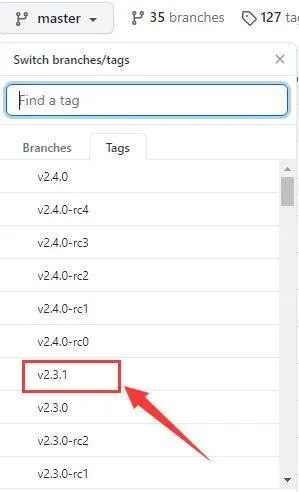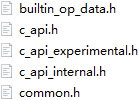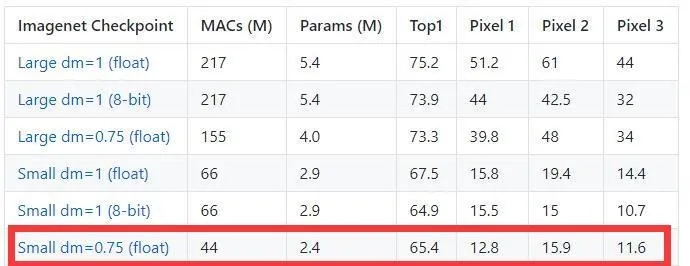发布人:腾讯研究员 华超
TensorFlow Lite 官方在移动端提供了官方编译好的库,我们直接拿来用就好。TensorFlow 在 Linux 平台与 Mac 平台下编译也非常轻松,基本不会遇到太多问题。但是在 Windows 10 下编译我们还是花费了一些时间,最后编译成功了。这里记录一下 Windows 10 下 TensorFlow Lite 编译过程,希望能够帮助到需要的人。
前期环境准备
1.1 安装 MSYS2
到 MSYS2 官方下载地址直接下载安装即可。安装完成后,将安装路径的 usr\bin 添加到环境变量:假设安装目录为 E:\msys64,则要将 E:\msys64\usr\bin 加入到环境变量 %PATH% 中。
打开控制台 cmd.exe,输入如下命令:
pacman -S git patch unzip
用于安装 git、patch 以及 unzip。
1.2 安装 visual studio
visual studio 可以安装 2019 版本或者最新版本即可。
1.3 安装 python
编译过程中,需要用 python 运行一些脚本,去 python 官网下载最新版 python 安装即可,这里不介绍 python 安装。这里我本机已经安装了Anaconda,使用的 python 版本为 3.6.3 :
E:\>python --versionPython 3.6.3 :: Anaconda 4.4.0 (64-bit)
理论上 python 版本直接安装最新的即可。
值得注意的是,安装完 python 后,还需要安装 numpy 库。否则编译期间会报错找不到 numpy。numpy 可以通过 pip install numpy 来安装。
1.4 下载 TensorFlow 源码
前往 github 下载 TensorFow 源码。目前最新版本是 2.4.0,2.4.0 的 c_api 变动比较大,因此选择 2.3.1 版本,等 2.4.x 版本稳定后再考虑用更新的,如下图所示:

下载 2.3.2 版本 tensorflow
1.5 安装 bazel
每个版本的 TensorFlow 都有其对应的 bazel 版本,如果版本不一致,可能会在编译期间出现错误,这种错误还很难排查,-_-||。因此,要确认好当前的 TensorFlow 源码应该使用哪个 bazel 版本。
解压缩 TensorFlow-2.3.1.zip 文件后,打开 cmd,进入 TensorFlow-2.3.1。输入命令 cat configure.py | grep -i bazel_ver。如下:
E:\>cd tensorflow-2.3.1
E:\tensorflow-2.3.1>cat configure.py | grep -i bazel_ve
_TF_CURRENT_BAZEL_VERSION = None
_TF_MIN_BAZEL_VERSION = '3.1.0'
_TF_MAX_BAZEL_VERSION = '3.99.0'
def check_bazel_version(min_version, max_version):
'TF_IGNORE_MAX_BAZEL_VERSION' not in os.environ):
global _TF_CURRENT_BAZEL_VERSION
current_bazel_version = check_bazel_version(_TF_MIN_BAZEL_VERSION,
_TF_MAX_BAZEL_VERSION)
_TF_CURRENT_BAZEL_VERSION = convert_version_to_int(current_bazel_version)
可以看到,最小的 bazel 版本为 3.1.0。最大版本是 3.99.0,这里看最大的版本意义不大,本意应该是希望在 3.1.0 以上。按照我对 TensorFlow 的了解, 他们每个版本都会使用当前最新的 bazel,换言之,在编译 TensorFlow 2.3.1 期间很有可能最新的 bazel 版本是 3.1.0,也就是说官方用的是 bazel 3.1.0 编译的。为了确保编译不出问题,跟官方保持一致的版本是最明智的选择。
前往 下载 bazel-3.1.0-windows-x86_64.exe,如下所示:
bazel-3.1.0-windows-x86_64.exe
下载后,放入到 E:\bazel 目录中,并把 E:\bazel 加入到环境变量 PATH 中,同时,把 bazel-3.1.0-windows-x86_64.exe 重命名为 bazel.exe。做完这一切后,打开 cmd,输入 bazel --version 确认 bazel 是否安装成功,以及版本是否正确。
E:\tensorflow-2.3.1>bazel --versionbazel 3.1.0
官方评论:建议使用 bazelisk,它自己自动下载需要的 bazel 版本,这样就不用自己每次去更新 bazel。
开始编译
2.1 执行 configure.py
configure.py 文件会预先设置 python 等一些相关可选项,需要先运行这个文件。
E:\tensorflow-2.3.1>python configure.py
You have bazel 3.1.0 installed.
Please specify the location of python. [Default is E:\Anaconda3\python.exe]:
Found possible Python library paths:
E:\Anaconda3\lib\site-packages
Please input the desired Python library path to use. Default is [E:\Anaconda3\lib\site-packages]
Do you wish to build TensorFlow with ROCm support? [y/N]: n
No ROCm support will be enabled for TensorFlow.
Do you wish to build TensorFlow with CUDA support? [y/N]: n
No CUDA support will be enabled for TensorFlow.
Please specify optimization flags to use during compilation when bazel option "--config=opt" is specified [Default is /arch:AVX]:
Would you like to override eigen strong inline for some C++ compilation to reduce the compilation time? [Y/n]: n
Not overriding eigen strong inline, some compilations could take more than 20 mins.
Would you like to interactively configure ./WORKSPACE for Android builds? [y/N]: n
Not configuring the WORKSPACE for Android builds.
Preconfigured Bazel build configs. You can use any of the below by adding "--config=<>" to your build command. See .bazelrc for more details.
--config=mkl # Build with MKL support.
--config=monolithic # Config for mostly static monolithic build.
--config=ngraph # Build with Intel nGraph support.
--config=numa # Build with NUMA support.
--config=dynamic_kernels # (Experimental) Build kernels into separate shared objects.
--config=v2 # Build TensorFlow 2.x instead of 1.x.
Preconfigured Bazel build configs to DISABLE default on features:
--config=noaws # Disable AWS S3 filesystem support.
--config=nogcp # Disable GCP support.
--config=nohdfs # Disable HDFS support.
--config=nonccl # Disable NVIDIA NCCL support.
运行期间,会确认 python 路径、是否配置 android 等等,因为我这边是编译精简 CPU 版的 TFLite,且是为了编译 dll。因此 android、cuda、ROCm 等我都选择了N。
2.2 编译
直接执行 bazel 进行编译即可:
bazel build -c opt --config=mkl //tensorflow/lite/c:tensorflowlite_c.dll
稍等片刻,等待自动下载相关库,并完成编译:
····
INFO: From Linking tensorflow/lite/c/tensorflowlite_c.dll:
LINK : warning LNK4044: 无法识别的选项“/s”;已忽略
正在创建库 bazel-out/x64_windows-opt/bin/tensorflow/lite/c/tensorflowlite_c.dll.if.lib 和对象
bazel-out/x64_windows-opt/bin/tensorflow/lite/c/tensorflowlite_c.dll.if.exp
Target //tensorflow/lite/c:tensorflowlite_c.dll up-to-date:
bazel-bin/tensorflow/lite/c/tensorflowlite_c.dll
INFO: Elapsed time: 291.250s, Critical Path: 60.46s
INFO: 305 processes: 305 local.
INFO: Build completed successfully, 444 total actions
打开 E:\tensorflow-2.3.1\bazel-out\x64_windows-opt\bin\tensorflow\lite\c 路径即可得看到 tensorflowlite_c.dll 和 tensorflowlite_c.dll.if.lib 两个文件。这里个文件即为我们最终的结果。
2.3 抠出头文件
光有 dll 和 lib 还不够,我们还需要头文件才能在 c++ 代码里面引用。最简单的方法是直接将整个TensorFlow 源码根路径加入到 include 路径中,这样的话整个项目会过于庞大。
最佳做法是将 E:\tensorflow-2.3.1\tensorflow\lite\c 目录下,只需要如下几个头文件:

tflite 相关头文件
使用 TFLite c api 运行 TFLite 模型
上文介绍了如何在 Windows 平台下编译 TFLite 为动态链接库 tensorflowlite_c.dll,接下来介绍如何使用 tensorflowlite_c.dll。上一篇文章中我们编译的 TFLite 库为 c 语言接口,即 c_api,在使用过程中,只需下面一条 include 语句即可:
#include "tensorflow/lite/c/c_api.h"
注意,如果不想亲自动手编译,可以直接到本文最后下载作者已编译好的库即可。
准备 TFLite 模型
TFLite 模型可以使用 TensorFlow 官方提供的相关模型转换接口得到,这里为了演示,使用 mobilenet v3 提供的 TFLite 模型。前往 找到如下 mobilenet v3 模型下载:

下载 mobilenet v3 tflite
如果无法打开链接或者是无法下载,请到附件中下载。
加载模型
封装函数 initModel,传入 TFLite 模型路径,代码如下:
void initModel(string path ) {
TfLiteModel* model = TfLiteModelCreateFromFile(path.c_str());
TfLiteInterpreterOptions* options = TfLiteInterpreterOptionsCreate();
interpreter = TfLiteInterpreterCreate(model, options);
if (interpreter == nullptr) {
printf("Failed to create interpreter");
cout << (path) << endl;
return ;
}
// Allocate tensor buffers.
if (TfLiteInterpreterAllocateTensors(interpreter) != kTfLiteOk) {
printf("Failed to allocate tensors!");
return ;
}
input_tf = getInputTensorByName(interpreter, "input");
output_tf = getOutputTensorByName(interpreter, "MobilenetV3/Predictions/Softmax");
}
上述代码中,主要使用了如下几个接口:
TfLiteModelCreateFromFile: 创建 TfLiteModel 对象 TfLiteInterpreterOptionsCreate: 设置一些选项,这里暂时没有设置更多的参数。TfLiteInterpreterCreate:创建 TfLiteInterpreter 对象,PS: 这个对象有点 Session 的感觉。TfLiteInterpreterAllocateTensors: 为所有的 Tensor 分配空间,用于向系统请求分配空间。getOutputTensorByName 和 getInputTensorByName 这两个函数是我这边单独封装。getOutputTensorByName 和 getInputTensorByName代码如下:
TfLiteTensor * getOutputTensorByName(TfLiteInterpreter * interpreter, const char * name)
{
int count = TfLiteInterpreterGetOutputTensorCount(interpreter);
for (int i = 0; i < count; ++i) {
TfLiteTensor* ts = (TfLiteTensor*)TfLiteInterpreterGetOutputTensor(interpreter, i);
if (!strcmp(ts->name, name)) {
return ts;
}
}
return nullptr;
}
TfLiteTensor * getInputTensorByName(TfLiteInterpreter * interpreter, const char * name)
{
int count = TfLiteInterpreterGetInputTensorCount(interpreter);
for (int i = 0; i < count; ++i) {
TfLiteTensor* ts = TfLiteInterpreterGetInputTensor(interpreter, i);
if (!strcmp(ts->name, name)) {
return ts;
}
}
return nullptr;
}
前向推理
前向推理主要包括 3 步:
向输入 Tensor 拷贝输入数据 执行推理 从输出 Tensor 将运算结果拷贝出来
示例代码如下:
void forward(float* data, int len) {
TfLiteTensorCopyFromBuffer(input_tf, data, len*sizeof(float));
TfLiteInterpreterInvoke(interpreter);
float logits[1001];
TfLiteTensorCopyToBuffer(output_tf, logits, 1001*sizeof(float));
float maxV = -1;
int maxIdx = -1;
for (int i = 0; i < 1001; ++i) {
if (logits[i] > maxV) {
maxV = logits[i];
maxIdx = i;
}
//printf("%d->%f\n", i, logits[i]);
}
cout << "类别:" << maxIdx << ",概率:" << maxV << endl;
}
上面代码写的比较粗糙,用起来不灵活,但是足够作为一个示例来使用了。
完整代码
接下来看完整代码,如下:
#include "pch.h"
#include <map>
#include <iostream>
#include <sstream>
#include <fstream>
#include <string>
#include "tensorflow/lite/c/c_api.h"
#pragma comment( lib, "tensorflowlite_c.dll.if.lib" )
using namespace std;
TfLiteTensor* input_tf;
TfLiteTensor* output_tf;
TfLiteInterpreter* interpreter;
TfLiteTensor * getOutputTensorByName(TfLiteInterpreter * interpreter, const char * name)
{
int count = TfLiteInterpreterGetOutputTensorCount(interpreter);
for (int i = 0; i < count; ++i) {
TfLiteTensor* ts = (TfLiteTensor*)TfLiteInterpreterGetOutputTensor(interpreter, i);
if (!strcmp(ts->name, name)) {
return ts;
}
}
return nullptr;
}
TfLiteTensor * getInputTensorByName(TfLiteInterpreter * interpreter, const char * name)
{
int count = TfLiteInterpreterGetInputTensorCount(interpreter);
for (int i = 0; i < count; ++i) {
TfLiteTensor* ts = TfLiteInterpreterGetInputTensor(interpreter, i);
if (!strcmp(ts->name, name)) {
return ts;
}
}
return nullptr;
}
void initModel(string path ) {
TfLiteModel* model = TfLiteModelCreateFromFile(path.c_str());
TfLiteInterpreterOptions* options = TfLiteInterpreterOptionsCreate();
interpreter = TfLiteInterpreterCreate(model, options);
if (interpreter == nullptr) {
printf("Failed to create interpreter");
cout << (path) << endl;
return ;
}
// Allocate tensor buffers.
if (TfLiteInterpreterAllocateTensors(interpreter) != kTfLiteOk) {
printf("Failed to allocate tensors!");
return ;
}
input_tf = getInputTensorByName(interpreter, "input");
output_tf = getOutputTensorByName(interpreter, "MobilenetV3/Predictions/Softmax");
}
void forward(float* data, int len) {
TfLiteTensorCopyFromBuffer(input_tf, data, len*sizeof(float));
TfLiteInterpreterInvoke(interpreter);
float logits[1001];
TfLiteTensorCopyToBuffer(output_tf, logits, 1001*sizeof(float));
float maxV = -1;
int maxIdx = -1;
for (int i = 0; i < 1001; ++i) {
if (logits[i] > maxV) {
maxV = logits[i];
maxIdx = i;
}
//printf("%d->%f\n", i, logits[i]);
}
cout << "类别:" << maxIdx << ",概率:" << maxV << endl;
}
long getSize(string path) {
ifstream file(path, ios::in | ios::binary);
long l, m;
l = file.tellg();
file.seekg(0, ios::end);
m = file.tellg();
file.close();
return m - l;
}
float* readBmp(string path, int& len) {
len = getSize(path);
unsigned char* buff = (unsigned char*)calloc(len, sizeof(unsigned char*));
ifstream fin(path, std::ifstream::binary);
fin.read(reinterpret_cast<char*>(buff), len *sizeof(unsigned char*));
fin.close();
float* data = (float*)calloc(len, sizeof(float));
for (int i = 0; i < len; ++i) {
data[i] = (buff[i]/255.0-0.5)*2;
}
free(buff);
return data;
}
int main()
{
initModel("v3-small_224_0.75_float.tflite" );
int size=0;
float* bmp = readBmp("input.bin", size);
forward(bmp, size );
}
附件下载
- bazel 3.1.0 下载
- TensorFlow 2.3.1 源码
- TFLite dll 2.3.1 包含头文件与 dll 和 lib 文件
- mobilenet v3 TFLite 模型下载
- 完整打包下载
![]()

